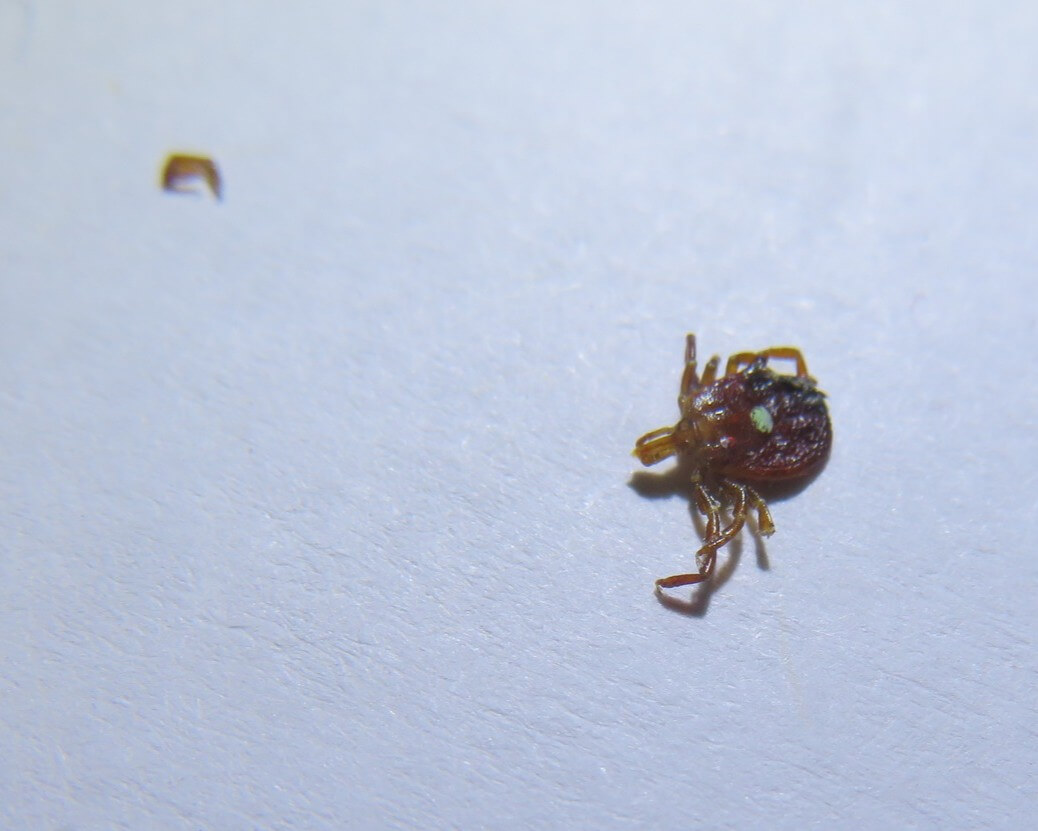As originally published by Dr. Dan Hebert in Duxbury Neighbors Magazine, July 2025 Issuance
As if we didn’t have enough issues with ticks, we now have a new species that has been establishing itself in Massachusetts over the last 5 years or so: the Lone Star tick. While the name implies a Texas origin, it has mostly been found in the South and some Southeastern states. The name actually comes from the unique single white spot on the tick’s back. Unfortunately, this tick’s range has been spreading into New England since shortly after 2015. It is now well-established on the Cape and Islands with many more towns reporting the tick as present within its borders.
The Lone Star tick does have tendency to cause humans to become allergic to red meats
Like other ticks, the Lone Star does carry diseases, though most are not typically dangerous to humans. However, this tick does have unfortunate tendency to cause humans to become allergic to red meats, including venison and pork. There is a sugar in meat called Alpha-gal that is also present in some tick saliva. When the tick bites a human and elicits an immune response, the result could create a meat allergy. Signs can me mild and delayed, such as rashes or gastrointestinal signs similar to a gluten allergy. However, some people can have more severe reactions like breathing difficulties or passing out. There are around 100,000 confirmed cases of tick-induced meat allergies, but specialists believe the actual number may be closer to 450,000. There have been several cases diagnosed on Martha’s Vineyard in recent years.

For our pets, the most common disease passed by the Lone Star tick is Ehrlichia. Like Lyme disease, this is a bacterial infection that can cause issues with the joints, nervous system, and bone marrow. Luckily, we already screen for this disease regularly since it is also carried by the brown dog tick. So, we are able to determine its presence very quickly and start antibiotic treatment. Without treatment, dogs can become very sick requiring hospitalization and blood transfusions.
Lone Star ticks are active hunters
Lone Star ticks are somewhat unique in that they are not passive hunters. Most other ticks will simply wait on bushes and grasses with their arms outstretched waiting for an animal or human to walk by and grab a hold-of. Lone Star ticks are active hunters which move MUCH more quickly than other ticks and seek out the carbon dioxide that animals breath out. So, simply putting your dog or child in the middle of the lawn away from the woods is no longer as safe for preventing ticks as it used to be.
The best protection for pets is still monthly flea/tick preventive, preferably an oral form as this protects humans in the house better. There is also a yearly flea/tick injection about to be released in the US that has been a huge success overseas. Protecting your property with perimeter sprays and other tick deterrents is also strongly recommended.
Google TickEncounter to find the University of RI’s tick education site. There are lots of great ideas on there for protecting your family, pets, and property.
Photo Credit: Ray Hebert